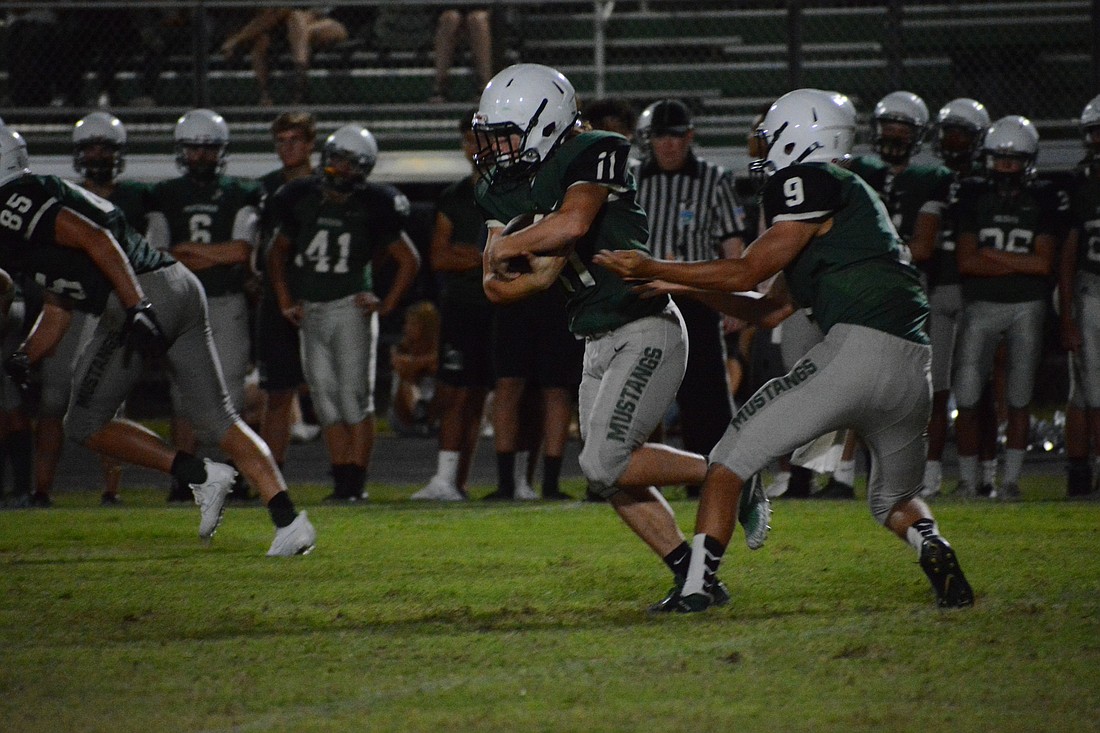- November 23, 2024
-
-
Loading

Loading

When did high school sports start to be run like college sports, where the best athletes can congregate at the powerhouse programs?
Perhaps when television shows like “Friday Night Lights” gained more exposure on national television.
It all has attained a new level in Florida the 2017-18 school year as education bill HB 7029, signed into law by Gov. Rick Scott in 2016, has taken effect.
The law does many things that are good, such as allowing students to transfer so they can take part in specialized programs that will help them reach their educational goals.
I do believe the bill falls short, though, when it comes to interscholastic athletics.
The law allows students to be eligible to compete in interscholastic sports immediately if they transfer, as long as they haven’t played that sport for their former school during the current season.
Hello, high school free agency.
Adding to the problem is that schools at capacity can’t accept transferring student-athletes, only lose them. That’s what happened to Lakewood Ranch football, as a few of its players, including projected starters at running back and defensive back, totally within their rights under the new law, transferred to play at other schools. Mustangs coach Mick Koczersut previously said they were the kind of players you could build a team around.
“We lost some kids,” Koczersut said, the disappointment clear in his voice. “I think it’s an ill-thought decision by the state Legislature making the rule. I don’t know what it’s going to teach kids. I think you’re going to see it used more and more as the year goes on.”
It makes program continuity more difficult, he added, along with winning.
If a key player transfers over the summer, it doesn’t leave a football coach time to adjust.
In the Mustangs’ case, Koczersut has tried to rework his rushing game, using senior starting quarterback Justin Curtis as a tailback at times. It has left the Mustangs in a tough spot.
It isn’t just a football issue, either. Players can transfer as many times as they want, and for each individual sport. Hypothetically, an athlete living in Lakewood Ranch could play football at Braden River in the fall, basketball for Jeremy Schiller’s Mustangs in the winter and then attend Sarasota High in the spring to play for the legendary Clyde Metcalf and the Sailors baseball team.
It’s instant gratification and zero accountability while making academics the extracurricular activity.
Does it become a breeding ground for recruiting? You be the judge.
There are fines in place for coaches or administrators who actively recruit athletes, which is against state guidelines, but good luck proving that one. It’s $5,000 for a first offense, that same amount plus a year-long suspension from coaching or directing the sport for a second, and another $5,000 plus a three-year revocation of an educator’s certificate for a third.
But don’t think recruiting won’t still happen under the table.
Granted, I just turned 23, but when I went to school, you forged friendships, made mistakes, learned a lot about yourself and developed a healthy sense of not just school pride, but community pride. You knew all the ins and outs of the surrounding area.
Each area has its flaws, sure, but you loved it all the same. When athletes took the field then, it was to represent their community, their people, not to represent themselves and add a highlight or two to their HUDL pages.
This is a case where Florida has simply made it too easy to transfer, with no thought about the consequences.